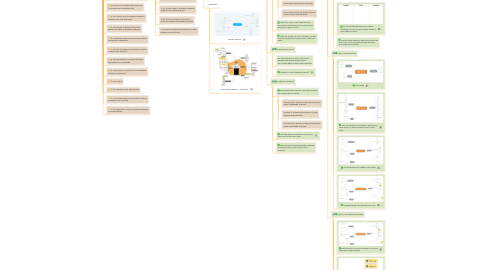
1. Current pain points when it comes to Education
1.1. 1. It’s hard to learn
1.2. 2. It’s unclear what to learn currently and going forward
1.3. 3. It’s hard to find the right resources to achieve your learning goals
1.4. 4. It’s unclear how to measure progress towards your learning goals
1.5. 5. It’s difficult to figure out how to practically apply knowledge acquired
1.6. 6. Finding the right purpose for learning is sometimes ambiguous
1.7. 7. It’s hard to catalog information for later retrieval and retention
1.8. 8. It’s hard to stay consistent with the application of knowledge
1.9. 9. The sense of community is going away (outside of schools)
1.10. 10. It’s costly
1.11. 11. It’s lacking proper mentorship
1.12. 12. It’s unclear how to measure the impact of what you’re learning
1.13. 13. It’s difficult to cater to people’s different learning abilities
2. Skill trees are aimed at fixing these pain points:
2.1. 1. It’s unclear what to learn currently and going forward
2.2. 2. It’s hard to find the right resources to achieve your learning goals
2.3. 3. It’s unclear how to measure progress towards your learning goals
2.4. 4. It’s difficult to figure out how to practically apply knowledge acquired
2.5. 5. It’s hard to catalog information for later retrieval and retention
3. What is a skill tree?
3.1. A skill tree is a visual representation of sub-skills required to learn a larger skill.
3.2. It’s an ongoing document where you record your progress and learning material.
3.3. Examples
3.3.1. Riding a bicycle
3.3.2. Playing the Ukulele — Beginner
4. Why skill trees?
4.1. Raise your self-awareness
4.1.1. By raising your self-awareness, skill trees address the following pain points:
4.1.1.1. It’s unclear what to learn currently
4.1.1.2. It’s unclear how to measure progress towards your learning goals
4.1.2. They force you to go deep into the sub-skills you’ve previously acquired and those you need to learn
4.1.3. Map out all the sub-skills required, as well as your current proficiency level in each of them.
4.2. Channel your focus
4.2.1. By channeling your focus, skill trees address the following pain point: It’s unclear what to learn going forward
4.2.2. Use 80/20 rule (Pareto Principle)
4.3. Guide your learning
4.3.1. By guiding your learning, skill trees address the following pain points:
4.3.1.1. It’s difficult to figure out how to practically apply knowledge acquired
4.3.1.2. It’s hard to catalog information for later retrieval and retention
4.3.1.3. It’s difficult to figure out how to practically apply knowledge acquired
4.3.2. Add the learning material you’ll use or have used to the skill trees.
4.3.3. Balance your learning between reading, watching videos, and doing a lot of practice.
5. How to build a skill tree
5.1. Use mind mapping tools like MindMeister.com.
5.2. Step 1. List the concepts, facts, and procedures
5.2.1. Try to get the big picture by listing anything you can come up with. Divide it into three columns:
5.2.2. Involve other people in the exercise and be sure to do as much research with the help of Google and Youtube.
5.3. Step 2. Build the tree
5.3.1. Start with
5.3.2. If we reconstruct the Riding a Bicycle skill from above, it would look like this to start with:
5.3.3. Group things so it makes more sense
5.3.4. Highlight what you want to focus on.
5.4. Step 3. Self-assess and share
5.4.1. Rate yourself on your proficiency on each node like in the example
5.4.2. Go from the last layers first. For the parent node, simply average the sub-nodes’ score.
5.4.3. Share the template with your friends, spouse, coworker or family and ask them to rate you on the different sub-skills.
5.4.4. Make two versions for yourself: (1) where you are right now and (2) where you want to be after your practice or study.
